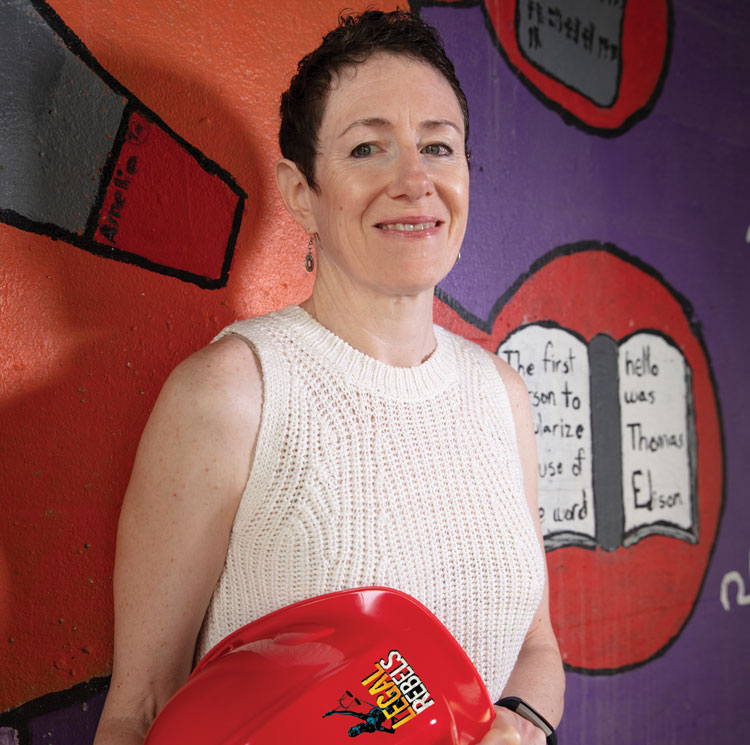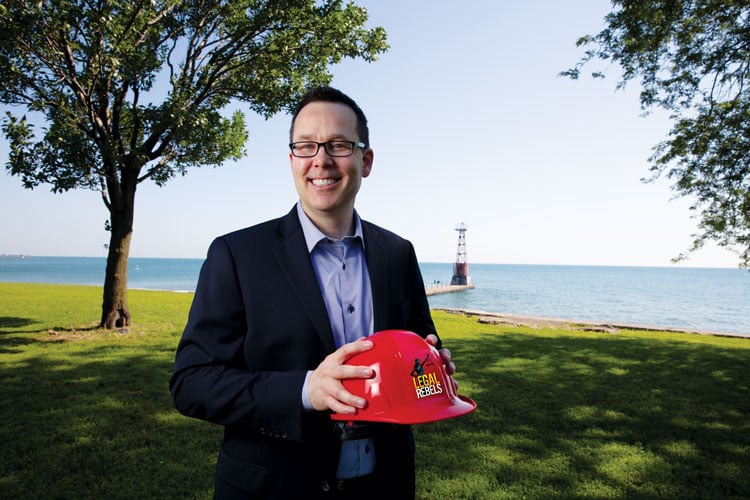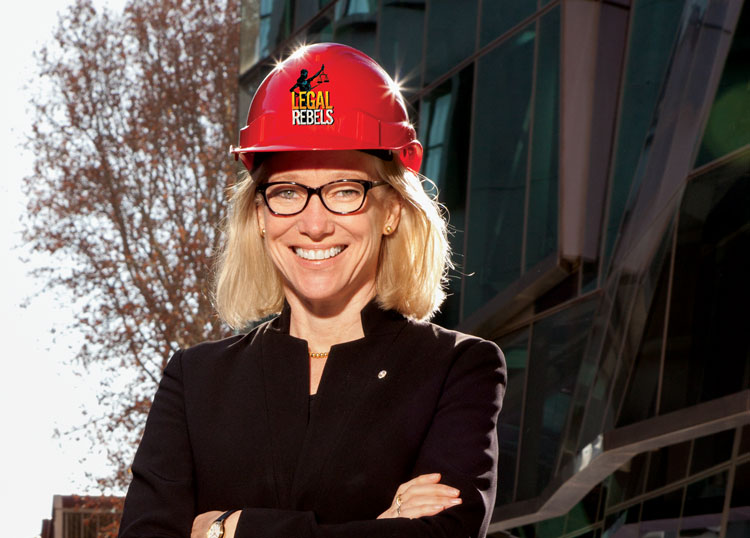2018 Legal Rebels: Knocking down the barriers of convention and building the profession anew

Photograph of Lisa Colpoys by Wayne Slezak.
New Futures in Law
Legal technology suits Lisa Colpoys because “there’s always something new and shiny,” says the Chicago attorney, who recently left a legal aid career to help build the Institute for the Future of Law Practice’s boot camp.
Set up in January by a team of legal academics and lawyers from both in-house and outside law firms, the nonprofit program trains law students in approaching law practice from a business mindset. And it places them in paid internships with employers, including corporate legal departments and law firms. It offers two types of internships: a traditional 10-week summer program and a seven-month residency that takes up both the summer and the following semester.
Since starting in March, Colpoys’ work has focused on creating curriculum, assembling the internship program and developing relationships. More than 20 employers are currently hosting IFLP interns from five law schools, Colpoys says. And this year the program had 41 students in the basic boot camp in two cities and five in the advanced boot camp.
“We’re trying to develop a 21st-century workforce lawyer, so even if students are going to practice law at a traditional firm, they will know about this technology, they are fluent in business, and can talk to their clients about their businesses,” says Colpoys, 54.
Before joining the institute, she served as executive director of Illinois Legal Aid Online. While there, she oversaw four website “redesigns-slash-evolutions.”
“One of the things I’m passionate about,” she says, “is changing the system.”
—S.F.W.

Photograph of Jae Um by Wayne Slezak.
A ‘Star Wars’ Shortcut
In the first-released Star Wars installment, Han Solo brags that he can captain the Millennium Falcon through a smuggling route in just under 12 parsecs—a parsec being a truly astronomical measurement of 3.26 light-years. The route itself is 18 parsecs, illustrating that Solo is a brassy pilot willing to fly closer to black holes and cut the route by a third.
That discrepancy in distance is the inspiration for Jae Um’s new venture, Six Parsecs, a legal market insights company.
“It’s about the competitive advantage you get if you’re nervy enough,” says Um, 35, a self-described Star Wars obsessive. “It’s about not taking the same route as the other smugglers.”
Um believes that she can translate legal business data into a story that helps law firms and lawyers better navigate a dynamic and shifting marketplace.
Her new endeavor is not a consulting firm but a content-focused business that will create data-based analysis and present it in a digestible way to help law firms, legal departments and startups think about how they compete in the marketplace.
“It drives me crazy that we are constantly talking past each other in this industry,” she says.
—J.T.

Photograph of Daniel Linna Jr. by Wayne Slezak.
The Measure of Legal Innovation
In Daniel W. Linna Jr.’s hypothetical on evaluating potential trial outcomes, the then-litigator presented colleagues with a decision tree—a chart with branches to show the progress of a class action through summary judgment motion, verdict and award. He went on to show how to assign a percentage likelihood to each potential outcome, including low-, medium- and high-value awards.
“That was my introduction to his budding interest in legal innovation,” says real estate lawyer Carl W. Herstein of Honigman Miller Schwartz and Cohn. “In his litigation work [Linna] developed an interest in analytics and the value of tools such as decision tree analysis to help both lawyers and clients understand risk and potential outcomes in terms of probability analysis. From seeds like this, his interest in legal innovation blossomed in his academic career.”
Last year Linna, 47, introduced his Law School Innovation Index, which tracks legal services innovations at 40 law schools. It lists schools according to 10 legal services objectives they could be teaching, including process improvement, leadership, innovative or entrepreneurial lawyering, computational law, data analytics and applied technology. The previous summer Linna had presented the Law Firm Innovation Index, looking at websites of 260 U.S., Canadian and global law firms for signs of innovation. Together they form the Legal Services Innovation Index.
Linna, who took the improbable step of moving from equity partner at Honigman to full-time engagements at Michigan State University College of Law, insists his ratings aren’t rankings for schools or firms but “describe where they’re going.”
“You don’t just go into a wood-paneled room somewhere and figure out what ideas the smart people have,” Linna says. “We’re all lawyers, we’re plenty smart and have great ideas. But especially when it comes to innovation and solving really wicked problems, we don’t know the answers.”
—Stephen Rynkiewicz

Photograph of Philippa Ryan by Wayne Daniels.
Developing Trust
When Philippa Ryan first heard about trustless relationships enabled by blockchain technology, her interest was piqued. But when she typed “trustless relationships” into her search engine, she says, “the only thing that came up was an ad for Ashley Madison,” the notorious dating website for married people looking to keep their infidelity discreet.
Today, Ryan, 52 and a lecturer at the University of Technology Sydney, can find more suitable material online. She’s helping fill the gap by writing and speaking around the world on the subject.
Ryan is a leading member of the International Organization for Standardization’s technical committee on blockchain and distributed ledger technologies. Being a part of Standards Australia and the committee’s secretariat, she says the work intends to produce high-level guidelines for governments and technologists to use when legislating or developing the technology around the globe.
Ryan expects the standards, which will be completed in 2020, will put developers and users on alert to technical legal issues, which then can be applied to the technology’s more intentional development.
And beyond flexing her own abilities, she is helping nurture the next generation of experts. Jed Horner, policy manager at Standards Australia, says Ryan “has pioneered the use of interns, including at graduate level, to assist in driving some of the discussions on specific areas of blockchain and [distributed ledger technology], giving them valuable exposure internationally and the ability to strengthen their own skills and capabilities.”
—J.T.
Write a letter to the editor, share a story tip or update, or report an error.



